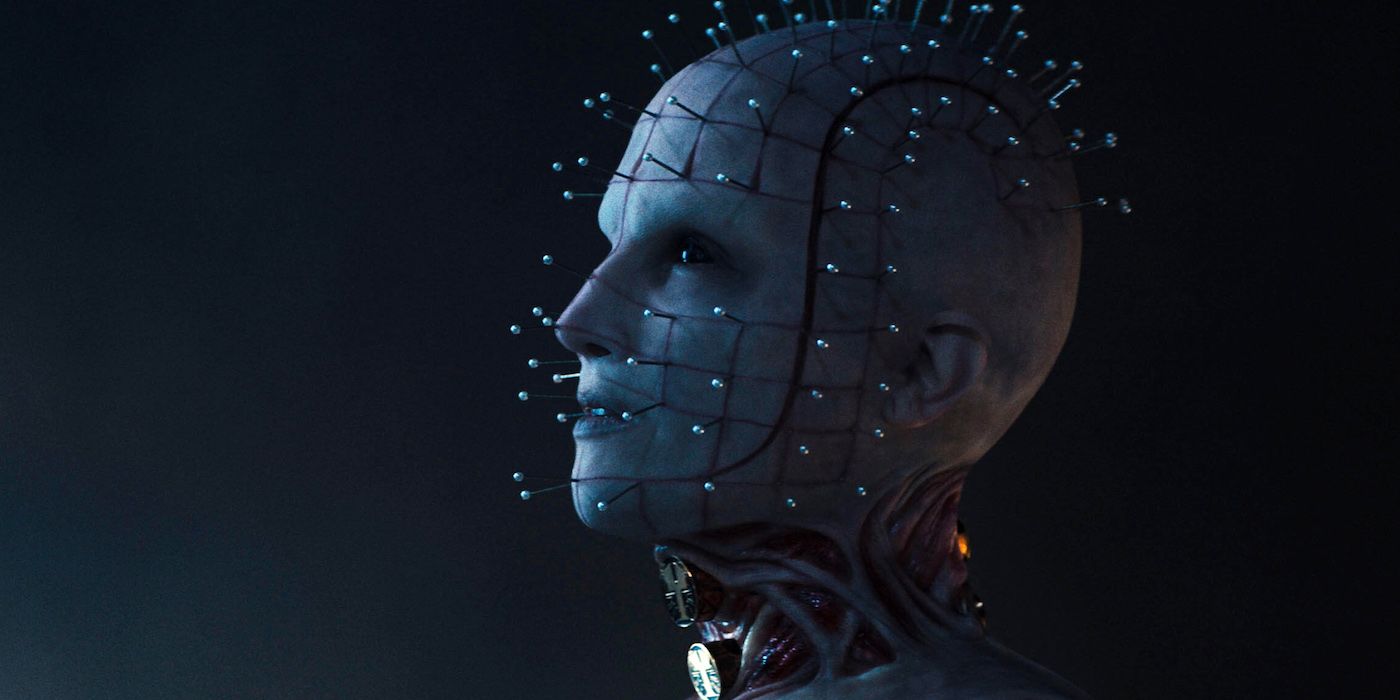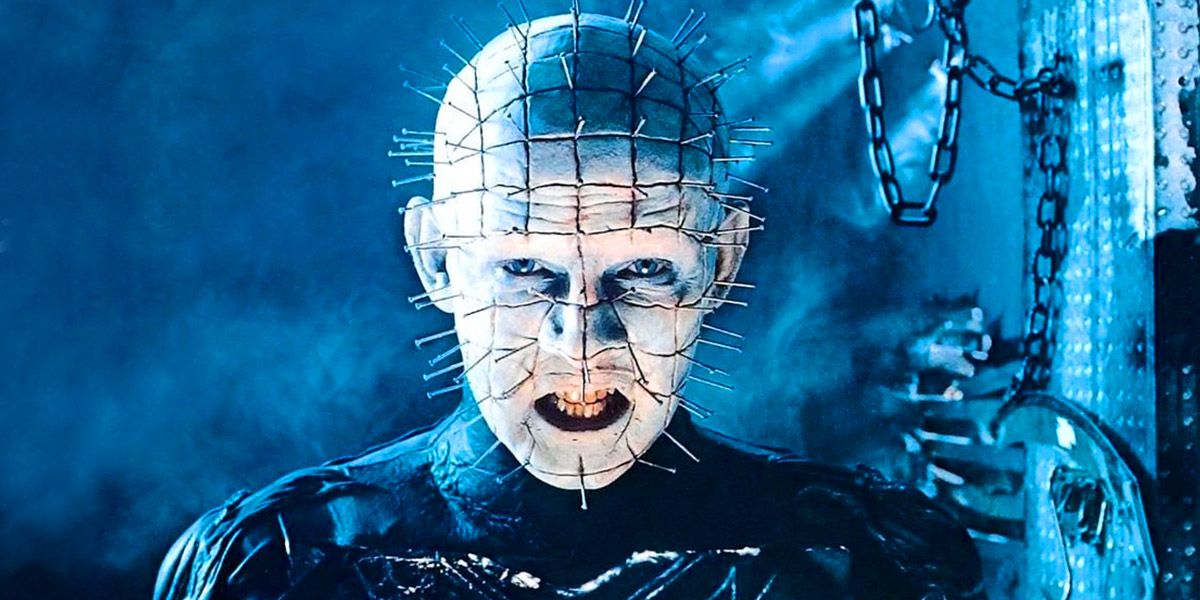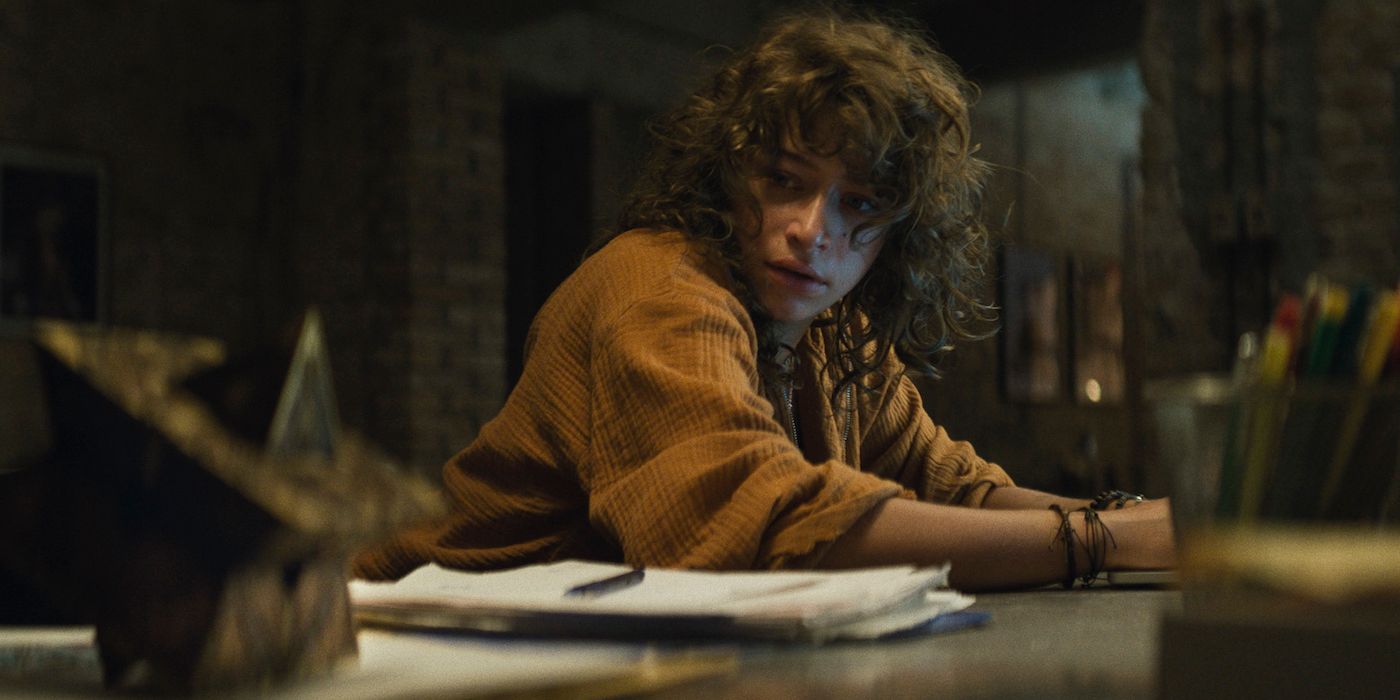The following contains spoilers for Hellraiser, now streaming on Hulu.
Remaking or rebooting any film can be a double-edged sword, but classics can be an impossible task. Creators are tasked with telling a story but keeping it faithful to the original material. Oftentimes, these films are rejected for taking so many liberties that they're practically unrecognizable, or they're a shot-for-shot remake and completely unnecessary. With the newly released Hellraiser, fans were skeptical if the new-look franchise would work compared to the original. But while both films contained similar themes and ideas, they are different approaches to the material, and that's a great thing.
Hellraiser was an instant classic when it debuted in 1987. Clive Barker's horror about a puzzle box that can summon twisted, chain hook-wielding beings is visually one of the most gruesome at the time, but Pinhead and the Cenobite race stood the test of time past the original. The film revolves around the Cotton family and their missing uncle Frank, who escapes from the Cenobites. Throughout the film, men are brought to the house by Frank's sister-in-law and killed so he can regain his body until his niece tricks him into being reclaimed by the race. The original film was successful enough to spawn multiple sequels and even the recent reboot.
How Hellraiser 2022 Compares to the Original
Developed by the creators of The Night House, the new Hellraiser focuses on a drug addict named Riley, who steals the puzzle box with her boyfriend and accidentally opens it. As Riley tries to find the puzzle's origins, people are killed as the puzzle changes form until it reaches its ultimate Leviathan configuration, where the holder is granted one of six desires from the ruler of Hell, Leviathan. Though the Cenobites and their "pleasures" remain unchained, the story is a complete deviation from the original by making the box a mystery rather than someone's initial disappearance.
In the original, the box, known as the Lament Configuration, is viewed as more a conduit that summons the Cenobites, and the story revolves around Frank's escape from them. But the remake's focus on the box is where it elevates. Both adaptations act as a pandora's box, but the Lament Configuration changes between six different forms in the remake, with each one providing a different function before the Leviathan formation. Another addition to the solving is that the original would emerge based strictly on solving it, but the new one releases a small blade, and when cut, the Cenobites emerge. Both setups rely on consequences, but the remake adds a mechanic that fits the thematic concepts in the series.
In the new film, if the blade misses, the user can sacrifice someone else. And if the solver doesn't get cut, they don't get sacrificed to the configuration. Finally, if given the Leviathan Configuration, they will be granted a pleasure, which typically doesn't end well for the participant. Combined with an addiction theme, it expresses that the damage one does to themselves isn't limited to them. Everyone around them is affected, no matter who receives the high or pleasure in this instance. Though the original focused more on the BDSM aspect than the addiction theme, it's more underlying than in the remake. With both similarities and differences reflected in the films, it's difficult to compare them, but the truth is, they don't need to be.
Hellraiser 2022 Stands on Its Own
As stated before, remakes are always at a disadvantage since there will be polarizing reactions. Remakes like The Invisible Man improved on their source material by modernizing the antagonist and focusing more on the thematic ideas they exhibit. On the other side, remakes like Psycho leaned so hard into the original film that it never had a chance to succeed since the beats were laid out for audiences. The challenge in rebooting any franchise is knowing how to balance an original story and the original material without making it unrecognizable or pandering.
Where Hellraiser succeeds in this comes down to something very few films have built in: an underlying mythos. The Cenobite race, as risque as they are, is quite mysterious compared to an entity like Freddy Krueger. They act more like morally ambiguous zealots than they do outright villainous, but their motives are tied to the Lament Configuration. There were different ideas of what the box opened to in the series, ranging from Hell to other masochistic domains. And the Cenobites, being a humanoid race, began with only the idea that they are humanoid and led into their human origins. Since different films interpret the Cenobites in their own unique way, there is more room for imagination and creativity.
The mythos and story can be tinkered with and adapted, but the strength of every Hellraiser film comes down to the face of the series, Pinhead. Pinhead was an instant classic from his first appearance, mostly because of the intense performance from Doug Bradley. His calm but powerful presence and trademark nails in the head made the character stand out, but he also had enough humanity to make him oddly relatable. In the 2022 reboot, Pinhead, known as "The Priest," is played by Jamie Clayton, who brings the same calm and powerful presence but adds to the zealous aspect of the character. Both characters are two sides of the same coin but fit their specific film's needs, one as a judge and the other as a religious figure.
Though both films are titled Hellraiser, both go completely different routes to reach the same destination. Victims in both films open the box and suffer the consequences, but one presents it through the lens of a monster, while the other is about an addict who wants to improve. The Lament Configuration also represents a mystery to be solved in both films, but it takes a different meaning as both films explore the ramifications of pandora's box. The remake is not trying to be the original Hellraiser -- it's creating its own legacy built on the original's mythos.
To see how the remake succeeds, Hellraiser is streaming now on Hulu.



